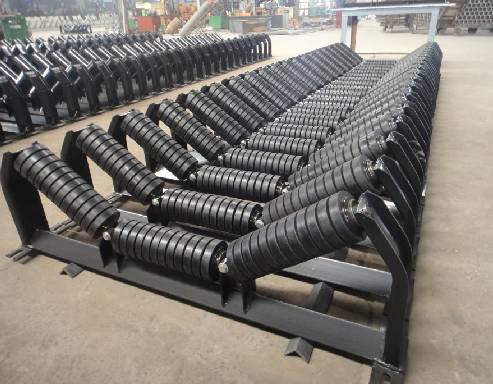 Afrikaans
Afrikaans  Albanian
Albanian  Amharic
Amharic  Arabic
Arabic  Armenian
Armenian  Azerbaijani
Azerbaijani  Basque
Basque  Belarusian
Belarusian  Bengali
Bengali  Bosnian
Bosnian  Bulgarian
Bulgarian  Catalan
Catalan  Cebuano
Cebuano  Corsican
Corsican  Croatian
Croatian  Czech
Czech  Danish
Danish  Dutch
Dutch  English
English  Esperanto
Esperanto  Estonian
Estonian  Finnish
Finnish  French
French  Frisian
Frisian  Galician
Galician  Georgian
Georgian  German
German  Greek
Greek  Gujarati
Gujarati  Haitian Creole
Haitian Creole  hausa
hausa  hawaiian
hawaiian  Hebrew
Hebrew  Hindi
Hindi  Miao
Miao  Hungarian
Hungarian  Icelandic
Icelandic  igbo
igbo  Indonesian
Indonesian  irish
irish  Italian
Italian  Japanese
Japanese  Javanese
Javanese  Kannada
Kannada  kazakh
kazakh  Khmer
Khmer  Rwandese
Rwandese  Korean
Korean  Kurdish
Kurdish  Kyrgyz
Kyrgyz  Lao
Lao  Latin
Latin  Latvian
Latvian  Lithuanian
Lithuanian  Luxembourgish
Luxembourgish  Macedonian
Macedonian  Malgashi
Malgashi  Malay
Malay  Malayalam
Malayalam  Maltese
Maltese  Maori
Maori  Marathi
Marathi  Mongolian
Mongolian  Myanmar
Myanmar  Nepali
Nepali  Norwegian
Norwegian  Norwegian
Norwegian  Occitan
Occitan  Pashto
Pashto  Persian
Persian  Polish
Polish  Portuguese
Portuguese  Punjabi
Punjabi  Romanian
Romanian  Russian
Russian  Samoan
Samoan  Scottish Gaelic
Scottish Gaelic  Serbian
Serbian  Sesotho
Sesotho  Shona
Shona  Sindhi
Sindhi  Sinhala
Sinhala  Slovak
Slovak  Slovenian
Slovenian  Somali
Somali  Spanish
Spanish  Sundanese
Sundanese  Swahili
Swahili  Swedish
Swedish  Tagalog
Tagalog  Tajik
Tajik  Tamil
Tamil  Tatar
Tatar  Telugu
Telugu  Thai
Thai  Turkish
Turkish  Turkmen
Turkmen  Ukrainian
Ukrainian  Urdu
Urdu  Uighur
Uighur  Uzbek
Uzbek  Vietnamese
Vietnamese  Welsh
Welsh  Bantu
Bantu  Yiddish
Yiddish  Yoruba
Yoruba  Zulu
Zulu Understanding the Role of Drive Pulleys in the Operation of Belt Conveyors
Drive Pulley in Belt Conveyor Systems
Belt conveyors are an integral part of various industries, facilitating the efficient transport of materials across short and long distances. At the heart of these systems is the drive pulley, a critical component that plays a substantial role in the conveyor's operation. The importance of the drive pulley cannot be overstated, as it drives the belt and enables the continuous movement necessary for transporting materials.
Understanding the Drive Pulley
The drive pulley, often located at the discharge end of a conveyor system, is responsible for the belt's movement. It is driven by a motor through various means, such as a gearbox or direct coupling, that allows it to generate the necessary torque to pull the belt along. The drive pulley is usually covered with a layer of rubber or similar materials to provide traction, ensuring that the belt moves smoothly and efficiently without slippage.
Design and Construction
Drive pulleys come in various designs and sizes, tailored to fit the specific requirements of each conveyor system. The design may vary depending on the application—heavy-duty applications may require larger and more robust pulleys, while lighter applications can utilize smaller pulleys. Typically, drive pulleys are designed with a crown on the face to keep the belt centered and to prevent it from slipping off during operation.
Materials used in constructing drive pulleys are crucial. They must endure continuous wear and tear from friction and embedded materials yet be lightweight enough to reduce unnecessary loads on the conveyor system. Common materials include steel, which provides durability and strength, and often features a protective coating to resist corrosion and wear.
Importance of Proper Maintenance
drive pulley in belt conveyor

Like all mechanical components, drive pulleys require proper maintenance to ensure longevity and reliability. Regular inspection is essential to check for signs of wear, misalignment, and damage. Maintaining the proper tension in the belt is also critical—loose belts can lead to slippage on the drive pulley, causing inefficiencies and potential shutdowns.
Lubrication of bearings is another important maintenance task that reduces friction and heat build-up, extending the operational life of the pulley. Operators must monitor for any unusual noise or vibration, which could indicate underlying issues that need immediate attention.
The Role of Technology
Technological advancements have enhanced the performance and efficiency of drive pulleys in belt conveyor systems. Modern designs often incorporate sophisticated monitoring systems that provide real-time data on operational parameters. Sensors can detect misalignment, wear, and changes in torque, allowing operators to make informed decisions about maintenance and adjustments before issues escalate into costly repairs or downtime.
Energy efficiency is another area where technology has made a significant impact. Variable frequency drives (VFDs) can be employed to control the speed of the motor connected to the drive pulley, allowing for operational flexibility and energy savings, especially during periods of low demand.
Conclusion
The drive pulley is a fundamental component that dictates the efficiency and effectiveness of belt conveyor systems. Its design, maintenance, and operational technologies are critical to ensuring the continuous and reliable movement of materials. As industries evolve and demands for efficiency increase, innovations related to drive pulleys and conveyor systems will continue to play a vital role in enhancing productivity and reducing costs. Recognizing and prioritizing the maintenance and advancement of drive pulleys will therefore remain essential for companies seeking to optimize their operations in a competitive market.
-
Revolutionizing Conveyor Reliability with Advanced Rubber Lagging PulleysNewsJul.22,2025
-
Powering Precision and Durability with Expert Manufacturers of Conveyor ComponentsNewsJul.22,2025
-
Optimizing Conveyor Systems with Advanced Conveyor AccessoriesNewsJul.22,2025
-
Maximize Conveyor Efficiency with Quality Conveyor Idler PulleysNewsJul.22,2025
-
Future-Proof Your Conveyor System with High-Performance Polyurethane RollerNewsJul.22,2025
-
Driving Efficiency Forward with Quality Idlers and RollersNewsJul.22,2025





























